You are using an out of date browser. It may not display this or other websites correctly.
You should upgrade or use an alternative browser.
You should upgrade or use an alternative browser.
New Type98/99 MBT thread
- Thread starter Dongfeng
- Start date
Neither was min to you; why do you think that I had?My post was not directed at you personally so cool your jets. Since we are in a Chinese – theme forum I kindly suggest some Chinese meditation techniques.
Nor have I claim that you did, so why bring something up that we do not disagree on?Now let me address the points you made one by one.
First of all I do not claim that Soviet and Russian tanks are always going to explode while American ones (other Western and Israeli) are indestructible.
My issue is that people claim that soviet tanks brew up because of the auto loader design; which is groundless. Any tank can brew up regardless of if they have an auto loader or not. which is what my examples have shown and was the point that I was talking about.Let me start with 1 and 2. An urban environment is difficult for tanks and I never stated the opposite. It is also difficult for an Abrams tank. Western that is for example US tanks have had to fight in urban environment for example in Iraq. However when you compare the results of an Abrams ‘brewing up’ with the result of a T 64, T 72, T 80 or M 84 brewing up the results are obviously visible. The Soviet / Russian tank will have in many cases its turret blown off, sometimes it will be blown apart completely. It is much less frequently the case with Abrams or Merkavas though they are not indestructible either. Frankly I do not see what to argue about it.
Whats a monkey model, well,As to 3. The ‘original’ not ‘monkey model’ tanks did not fare better – Grozny New Year’s Eve 1994 / 5 might be a hint. The Russian original for their own army T 72 blew up just like all other T 72 models. Plus what is exactly a ‘monkey model’? For example much of Polish T 72 production which went to Middle Eastern customers including Iraq did not differ much (except the inside lettering was in English) from those delivered to the Polish Army. Also the various sub models of the T 72 differed significantly. Thus an export ‘monkey model’ T 72 delivered in late 80s might be better equipped and armoured than the ‘original’ T 72 delivered to the Soviet Army a decade earlier. In addition the Soviet Union also delivered for export customers tanks including T 72 from their reserve stock which were the ‘original’ as you call them tanks for the Soviet Army. You also ask if the losses suffered by Iraqi ‘Abrams’ are a part of ‘Abrams’ combat legacy to which I answer sure they are just like previous Iraqi T 72 losses are a part of T 72 combat legacy. When it comes to ‘Abrams’ taken out by ‘Kornet’ or some other Russian ATGM it does not mean the ‘Abrams’ is a weakly armoured tanks it means that modern Russian ATGMs are among the best in this class of weaponry. I do not recall claiming the opposite.
1) simplified fire controls
2) simplified crew survibility equipment
3) lack of NBC protection
4) lack of composite armor inserts
5) thinner armor scheme
6) downgraded ammunition
Sure later export models were as good as T-72A models
Have I claimed that Abrams are weakly armoured? quote me? what I have said was all tanks are weak from the side and rear which the destroyed Abrams and Merkervas showed. This is a response to your statement of:
I don't disagree with you, but it is more about physics than design that tanks have stronger frontal armor and weaker side and rear armor as you have now just said.The same with armour. Soviet tanks (now days Russian) have good frontal armour that is thick glacis plate and turret front but suffer from weak armour at various other places and even additional armour (ERA and the like) does not make up for it. Combat experience in a number of conflicts showed that a hit to the side of a T 64, T 72 or T 80 even with a relatively light shoulder fired AT weapon will likely penetrate with a substantial possibility of a catastrophic explosion.
Well lets see,Moving on to 4. Why am I comparing older T72s and T64s to modern tanks because sorry but they were and are modern tanks. You might not know but the T 64 with which it all started was meant to outclass all contemporary tanks in the world. In some categories it did but the penalties that went with this are very heavy. The T 72 grew out of the T 64 as a simpler version and after much ‘mutations’ on the drawing board it finally emerged as a separate design though rooted in the T 64. Then the T 80 came along. All three models share significant similarities and because of that all suffer from similar drawbacks. For some time all three were even simultaneously in production. The current Russian Army T 90 is nothing more than a T 72 on steroids and thus is basically another ‘mutation’ of the previous designs. All in all though with additional armour, upgraded FCS and uprated engine basically all MBTs produced east of the Oder are rooted in the same designs dating back several decades. The same goes for the vast majority of western tanks. Even the basic design of ‘Abrams’, ‘Leo II’ etc. are already decades old. So yes all these tanks are modern tanks though people who served in them as young men when they were introduced first are sometimes already grandfathers. The RGP 7 or more precisely the projectiles that can be fired from it can sometimes also penetrate the side of a modern western tanks. The difference is what happens after the penetrations. Few ‘Abrams’ or ‘Merkavas’ blew up with the turret literally flying away from such a hit but many T 64, T 72, T 80 and M 84 suffered this fate. The failure to penetrate the armour of Iraqi T 72 by L 7 105 mm guns can have different reasons. As I have stated in my original post (read it carefully) the frontal turret arc and glacis plate of the T 72 were good armour and the penetration especially by kinetic rounds depends on many factor such as distance and angle for example. And resistance to penetration is very important as is to have systems to deal with it. You worry about not being hit but you also worry about what happens when you get hit – it is as simple as that.
T72-1973
Abrams-1980
Leo2-1979
T64-1964
You are looking at a 7 years difference between the T72 and the Leo2; 7 years is a lot, Germany went from the Panzer I to the Tiger 2 in the same time frame. The T64 is definitely a different animal, it belongs with the M60.
But you are right, the T44-T54/55-T62-T72-T90 family, should really be compared to the M26-M46-M47-M48-M60-M60-2000 family both went back to the dying days of WW2, while the M1 family came 40 years later. Its more accurate to say that russian soldiers are serving on a family of vehicle which their grand dad had served on, while an american or german tanker are serving on a family that was introduced when they were babies or several years before they were born.
The question of blown off turret is also a question of how many tank had been in combat; several thousands of Abrams have been in combat for a decade of continuous combat; hundred of thousands T72/62/55/54 variants had seen combat over the last 40 years; is it not normal to see more destroyed tank and blown off turret?
And still, there is no concrete proof that it is the auto loader, heck why doesn't the ammunition stowed in the hull of Abrams and other western tank not blow up when the armor is penetrated and just burn out? I would guess that the fire suppression system is more a key than the fact that there is an auto loader - and definitly not a compromize that was made because of an autoloader.
Now design philosophy, to have a smaller target to reduce the chance of getting hit, or to design the tank to be able to sustain hits; well I don't know what is correct, is the ECM/APS/ERA/amour combination of russian design better or western tank with high emphasis on inert armor? well, it is the same debate as a F35 stealth or pakfa/J20 maneuverability. I do not believe that there is a conclusive better design.
Grozny, well 1994 what do you expect when you drive an armoured column into a urban ambush against ex soviet military? I would expect Merverkas will fare similarly if they were driven into Tel Aviv held by opposing ex Israeli military.
If you believe it, Grozny 1999, the russian claim that they have only lost a handful of tanks as they leveled the city with artillery and air strikes. where one tank sustained 10+ RGP hits and maintained combat effectiveness.
Hell, it is propaganda to me from which perspective you stand.
Last but not least kindly please do not lecture me about being spoon fed info by media for except invoking a conversation with two US Army tankers all you provide is stuff one can find using google. I do not know how long you are in the field of military research but my short sting on this forum should not confuse you as I have been researching stuff since 20 years.
How did I lecture you? this is an open forum, you have the right to take what you want. You would notice that I did not invoke any discussion with US Tankers. And the point about Google is, if you wish to look you will be able to find.
We can all flash credentials and what not, fact is you have not provided first hand sources that can identify the brewing up of soviet tanks are by auto loader design. Everything you have provided is anecdotal just like me; but I am arguing that we cannot come to a conclusion that soviet tanks brew up because of the auto loader because of lack of sources, which with what we have provided here is perfectly viable.
TerraN_EmpirE
Tyrant King
Lenz Watch this
A Syrian Army T72 has it's turret popped off via a RPG
A tank turret like that of a Naval battle ship is held on by gravity. There are because of weight only three ways to take the turret off. One the Hulk. To remove the turret by lifting it off the tank this is the most common for repair and upgrade.
two the slip. The tank crew screwing up and the tank falling into a situation where in the tank turret falls out
and Three to the moon. Where in the turret is propelled off the tank like a rocket to the moon. These are the most impressive failures.
[video=youtube_share;xmy3sqvnT4U]http://youtu.be/xmy3sqvnT4U[/video]
They key failing is not the Autoloader it's the weapon storage. by placing the ammo under the turret upon penetration and cook off the ammo propels the turret right off the tank. The Argument has been that the T72 and other Russian tanks of comparable period and tanks utilizing a auto loader of comparable design are more dangerous to there crews then western designs.
Ok So we know and have proven that the T72 places it's ammo in the base of the turret and knowing this we also know that despite arguments to the contrary this compartment has been penetrated repeatedly. How? First the weight Should show part of the answer. T72 and T64 tip the scales in the 40 ton class. Even Russia's most advanced tank is 40 tons.
The French Leclerc is a 50 ton class tank the PLA's Type 99 is a 50 Ton class tank. Leo2 is in the 60 ton class, M1A2 60 ton class, Merkiva 60 ton class.
So?
So weight is mass, Mass is armor, look at the other tanks I mentioned. They are heavier tanks because they have better armor. the Ammo storage is the mechanism the Armor is meant to stop the trigger form getting to it. It's not worked out that well. Although the frontal armor has stood up. the side and rear armor has not this allows penetration of the hull and turret into the ammo storage.
now there are other MBT's that place there spare ammo in the hull the Leo 2 for example. but in that case the Ammo is stored not in the base of the turret but in a armored compartment as protective as that of the driver save for the lack of a armored door although given it's location if that storage is hit the crew would probably already be dead, and the crew has the option of not using that storage. If the Crew of a Leo2 or a Leclerc feels thaat they have a risk of dealing with a tank killer they can leave that spare ammo magazine empty.
The T series gives not option. Now if a Tank crew of a western tank does leave spare magazine empty but it takes a hit to the tank's ammo magazine any way what happens? First the blow out panels. Challenger2 and Abrams have blowouts on the top and the rear. And Abram's magazine Bustle is not actually integral to the turret meaning that if all else fails it's likely that the Bustle will be blown off.
A Syrian Army T72 has it's turret popped off via a RPG
A tank turret like that of a Naval battle ship is held on by gravity. There are because of weight only three ways to take the turret off. One the Hulk. To remove the turret by lifting it off the tank this is the most common for repair and upgrade.
two the slip. The tank crew screwing up and the tank falling into a situation where in the tank turret falls out
and Three to the moon. Where in the turret is propelled off the tank like a rocket to the moon. These are the most impressive failures.
[video=youtube_share;xmy3sqvnT4U]http://youtu.be/xmy3sqvnT4U[/video]
They key failing is not the Autoloader it's the weapon storage. by placing the ammo under the turret upon penetration and cook off the ammo propels the turret right off the tank. The Argument has been that the T72 and other Russian tanks of comparable period and tanks utilizing a auto loader of comparable design are more dangerous to there crews then western designs.
Ok So we know and have proven that the T72 places it's ammo in the base of the turret and knowing this we also know that despite arguments to the contrary this compartment has been penetrated repeatedly. How? First the weight Should show part of the answer. T72 and T64 tip the scales in the 40 ton class. Even Russia's most advanced tank is 40 tons.
The French Leclerc is a 50 ton class tank the PLA's Type 99 is a 50 Ton class tank. Leo2 is in the 60 ton class, M1A2 60 ton class, Merkiva 60 ton class.
So?
So weight is mass, Mass is armor, look at the other tanks I mentioned. They are heavier tanks because they have better armor. the Ammo storage is the mechanism the Armor is meant to stop the trigger form getting to it. It's not worked out that well. Although the frontal armor has stood up. the side and rear armor has not this allows penetration of the hull and turret into the ammo storage.
now there are other MBT's that place there spare ammo in the hull the Leo 2 for example. but in that case the Ammo is stored not in the base of the turret but in a armored compartment as protective as that of the driver save for the lack of a armored door although given it's location if that storage is hit the crew would probably already be dead, and the crew has the option of not using that storage. If the Crew of a Leo2 or a Leclerc feels thaat they have a risk of dealing with a tank killer they can leave that spare ammo magazine empty.
The T series gives not option. Now if a Tank crew of a western tank does leave spare magazine empty but it takes a hit to the tank's ammo magazine any way what happens? First the blow out panels. Challenger2 and Abrams have blowouts on the top and the rear. And Abram's magazine Bustle is not actually integral to the turret meaning that if all else fails it's likely that the Bustle will be blown off.
I dare to say that POVs regarding T 72 and other Soviet / Russian MBTs and their autoloaders were stated, so I propose to move on.
An important thing, which is not entirely disconnected from the previous issue discussed, are autoloaders in Chinese MBTs. It is so, that basically all modern Chinese MBTs used both by the PLA and offered for export use autoloaders. Now it would be most interesting to read something on how they operate, how is the ammo stored in them and everything else that is relevant.
An important thing, which is not entirely disconnected from the previous issue discussed, are autoloaders in Chinese MBTs. It is so, that basically all modern Chinese MBTs used both by the PLA and offered for export use autoloaders. Now it would be most interesting to read something on how they operate, how is the ammo stored in them and everything else that is relevant.
Lenz Watch this
A Syrian Army T72 has it's turret popped off via a RPG
A tank turret like that of a Naval battle ship is held on by gravity. There are because of weight only three ways to take the turret off. One the Hulk. To remove the turret by lifting it off the tank this is the most common for repair and upgrade.
two the slip. The tank crew screwing up and the tank falling into a situation where in the tank turret falls out
and Three to the moon. Where in the turret is propelled off the tank like a rocket to the moon. These are the most impressive failures.
[video=youtube_share;xmy3sqvnT4U]http://youtu.be/xmy3sqvnT4U[/video]
They key failing is not the Autoloader it's the weapon storage. by placing the ammo under the turret upon penetration and cook off the ammo propels the turret right off the tank. The Argument has been that the T72 and other Russian tanks of comparable period and tanks utilizing a auto loader of comparable design are more dangerous to there crews then western designs.
Ok So we know and have proven that the T72 places it's ammo in the base of the turret and knowing this we also know that despite arguments to the contrary this compartment has been penetrated repeatedly. How? First the weight Should show part of the answer. T72 and T64 tip the scales in the 40 ton class. Even Russia's most advanced tank is 40 tons.
The French Leclerc is a 50 ton class tank the PLA's Type 99 is a 50 Ton class tank. Leo2 is in the 60 ton class, M1A2 60 ton class, Merkiva 60 ton class.
So?
So weight is mass, Mass is armor, look at the other tanks I mentioned. They are heavier tanks because they have better armor. the Ammo storage is the mechanism the Armor is meant to stop the trigger form getting to it. It's not worked out that well. Although the frontal armor has stood up. the side and rear armor has not this allows penetration of the hull and turret into the ammo storage.
now there are other MBT's that place there spare ammo in the hull the Leo 2 for example. but in that case the Ammo is stored not in the base of the turret but in a armored compartment as protective as that of the driver save for the lack of a armored door although given it's location if that storage is hit the crew would probably already be dead, and the crew has the option of not using that storage. If the Crew of a Leo2 or a Leclerc feels thaat they have a risk of dealing with a tank killer they can leave that spare ammo magazine empty.
The T series gives not option. Now if a Tank crew of a western tank does leave spare magazine empty but it takes a hit to the tank's ammo magazine any way what happens? First the blow out panels. Challenger2 and Abrams have blowouts on the top and the rear. And Abram's magazine Bustle is not actually integral to the turret meaning that if all else fails it's likely that the Bustle will be blown off.
Leo 2s are not going to war with only 15 rounds of ammo, that would be a huge disadvantage and you can't just ditch ammo in mid battle. AFAIK Challenger 2 does not no have blow out panels for its ammo charges which are under the turret ring. M1 is the exception not the rule all other mbts have some or all ammo in the hull. Merkava also has almost all ammo in the hull (Merkava 4 with 10 round in the turret) right behind the turret ring with no blow out panels. If we are talking about a non penetration hit of the autoloader then a combination of armor and fire retardant in the autoloader is more than enough to keep the ammo safe or at least allow the crew time to escape if the tank is burning. The problem with T72 is that crews put ammo all over the place outside the armored autoloader, around the turret and hull around the fuel tanks since the autoloader itself only holds 22 rounds.
Last edited:
TE,Ok So we know and have proven that the T72 places it's ammo in the base of the turret and knowing this we also know that despite arguments to the contrary this compartment has been penetrated repeatedly. How? First the weight Should show part of the answer. T72 and T64 tip the scales in the 40 ton class. Even Russia's most advanced tank is 40 tons.
The French Leclerc is a 50 ton class tank the PLA's Type 99 is a 50 Ton class tank. Leo2 is in the 60 ton class, M1A2 60 ton class, Merkiva 60 ton class.
So?
So weight is mass, Mass is armor, look at the other tanks I mentioned. They are heavier tanks because they have better armor. the Ammo storage is the mechanism the Armor is meant to stop the trigger form getting to it. It's not worked out that well. Although the frontal armor has stood up. the side and rear armor has not this allows penetration of the hull and turret into the ammo storage.
now there are other MBT's that place there spare ammo in the hull the Leo 2 for example. but in that case the Ammo is stored not in the base of the turret but in a armored compartment as protective as that of the driver save for the lack of a armored door although given it's location if that storage is hit the crew would probably already be dead, and the crew has the option of not using that storage. If the Crew of a Leo2 or a Leclerc feels thaat they have a risk of dealing with a tank killer they can leave that spare ammo magazine empty.
The T series gives not option. Now if a Tank crew of a western tank does leave spare magazine empty but it takes a hit to the tank's ammo magazine any way what happens? First the blow out panels. Challenger2 and Abrams have blowouts on the top and the rear. And Abram's magazine Bustle is not actually integral to the turret meaning that if all else fails it's likely that the Bustle will be blown off.
Just on the physics,
Mass doesn't equal armor thickness/effectivenss. For a simple illustration, armor is a function of the mass on the surface area of a vessel. if the volume of the vessel is large, the mass of armor would be large, but it would be spread over a larger area meaning it is less mass per unit area. this is why the KGVs in WW2 is better armored than the Bismarks, even thou they are 15%~ lighter and smaller.
Second thing is, any detonation of ammunition inside a vessel nomatter if it is located directly below the turret or not will likely blow the turret off - if the hatches are closed. basically, the combustion creates a pressure that acts on the inner surface area of the vessel. if there is a sufficient path of least resistance, it will travel via that path.
I dare to say that POVs regarding T 72 and other Soviet / Russian MBTs and their autoloaders were stated, so I propose to move on.
An important thing, which is not entirely disconnected from the previous issue discussed, are autoloaders in Chinese MBTs. It is so, that basically all modern Chinese MBTs used both by the PLA and offered for export use autoloaders. Now it would be most interesting to read something on how they operate, how is the ammo stored in them and everything else that is relevant.
I think VASILIY FOFANOV's armor site gives a good idea of the russian auto loaders, but autoloader revolves around several design:
1) vertical carousel, like used in destroyers (the famed US 5" ) or the one used in the T64 / T80
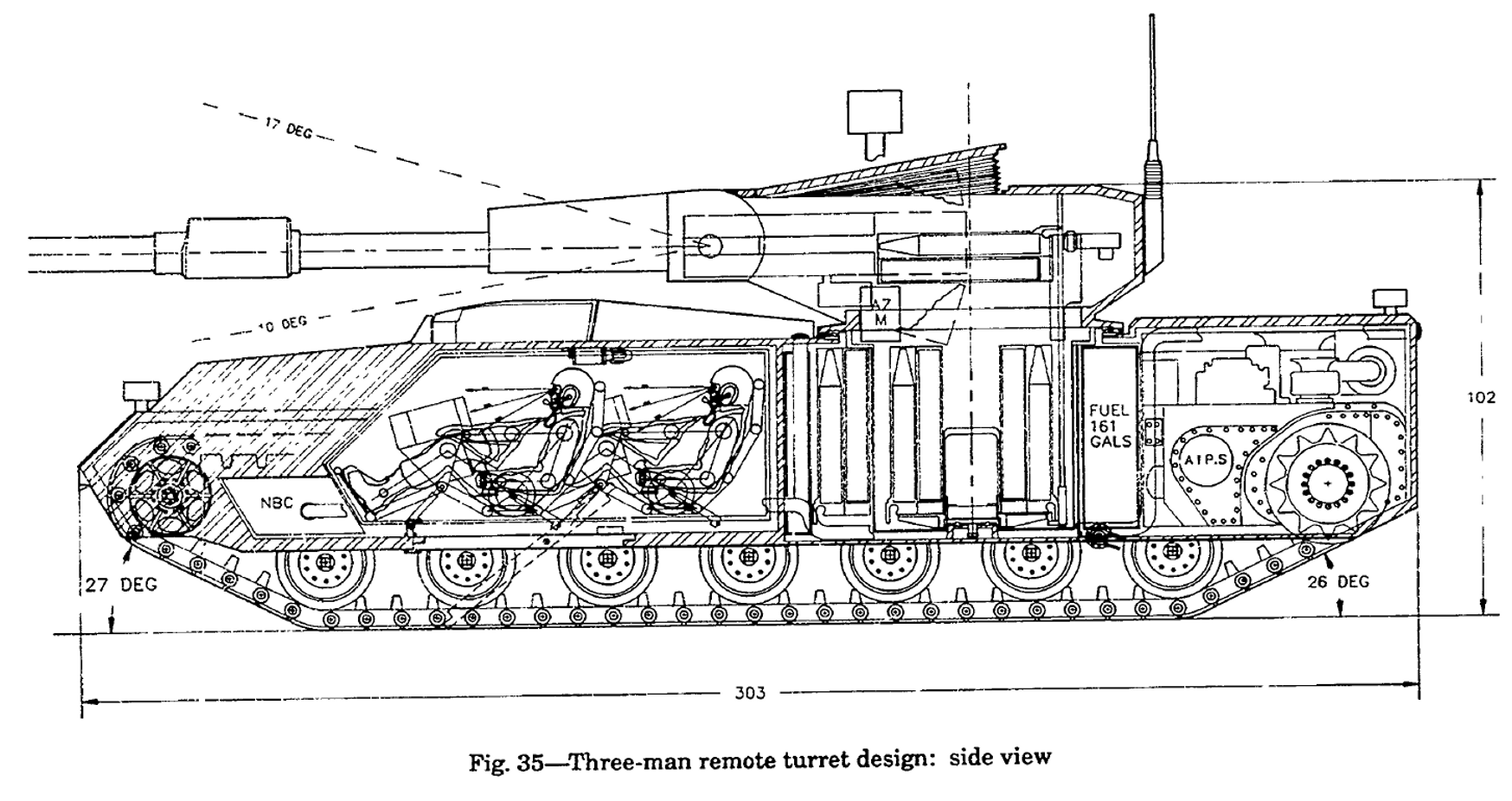
Pro: high capacity (30 round for the T80), fast shooting speed (navel guns can do 30 RPM easy), easier to reload magazine
con: space inefficient, more exposed
2) horizontal pancake carousel, like used in the T72,

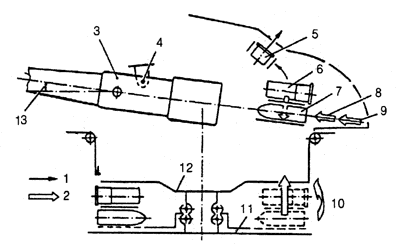
pro: very flat,
Con: limited capacity (22 rounds for the T72), pancake becomes very wide with longer rounds - split round design = slower rate of fire, slower to reload magazine
3) revolver, like the one used in the AMX13
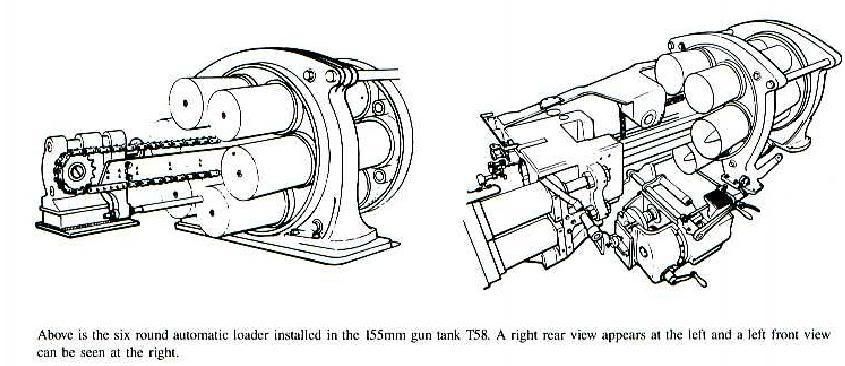
Pro: very fast rate of fire - 2 sec per shot? no need to zero gun before reload
Con: limited capacity - 8 rounds? becomes bulky when the revolver becomes bigger;
4) stripper clip / conveyor belt, Lerlec, K2, T95
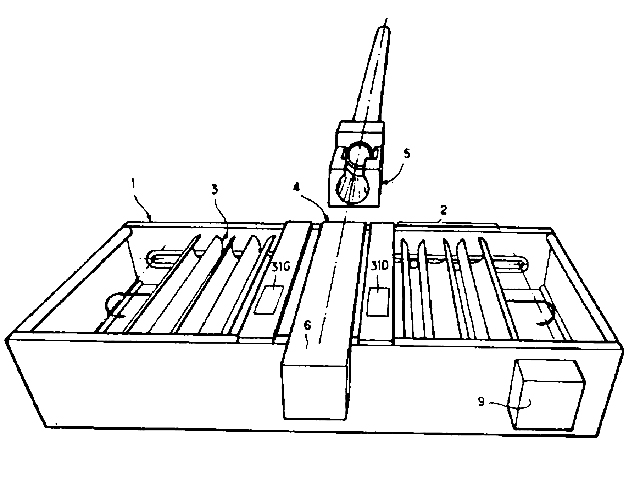
Pro: easier to intergrate with blow out panels
Con: need to be bustle mounted, reloading the magazine is slow
ladioussupp
Junior Member
.
Could someone translate this image
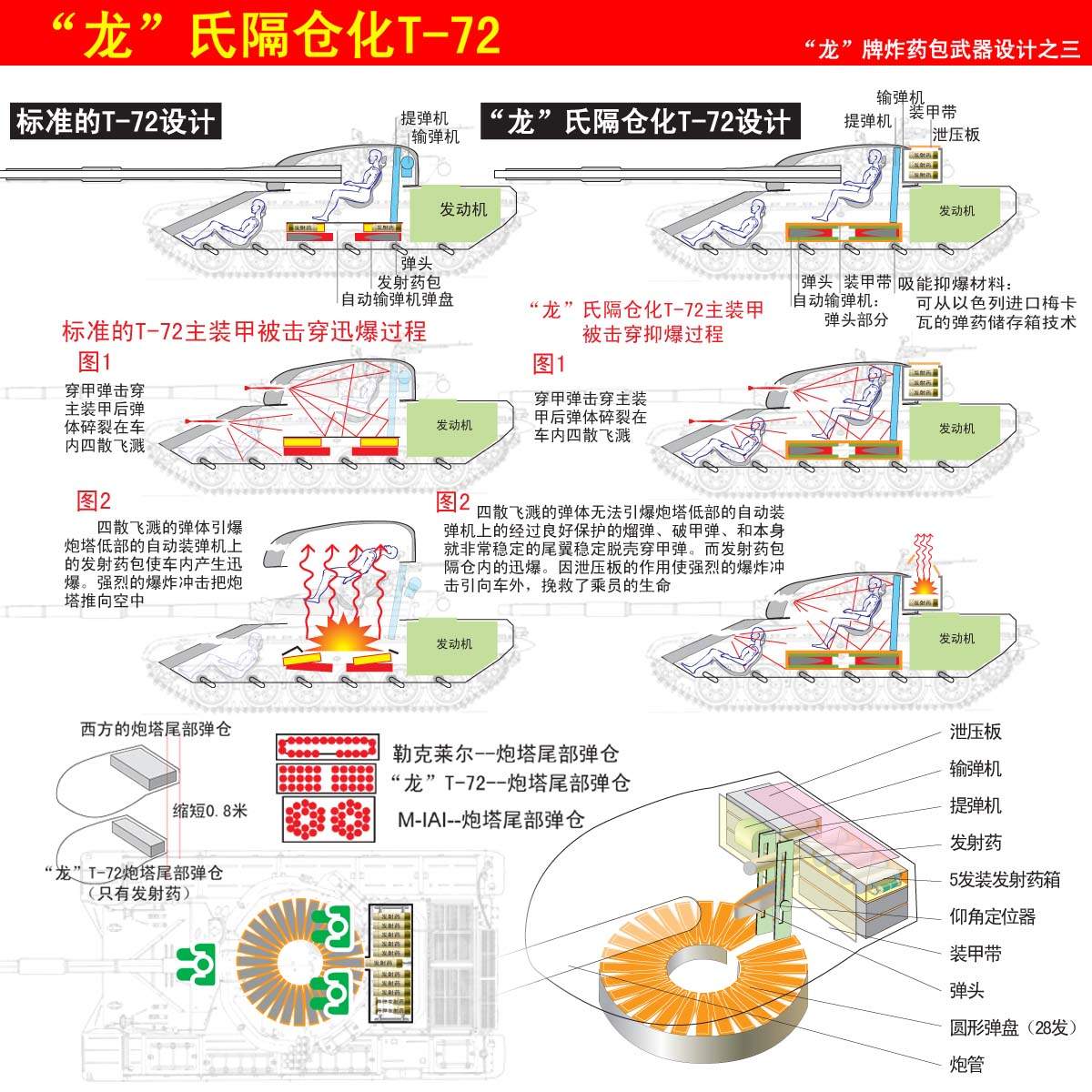
"Dragon" compartmentalized storage of propelling cartridges. By putting propelling cartridges in the compartment of turret, the exploding pressure of the ignited cartridges goes upward and outward of the turret. The compartment design is like M1 Abrams. However, the auto loader of T-72 125mm main gun needs to push the projectiles first into the chamber then the propelling cartridge.
"Dragon" compartmentalized storage of propelling cartridges. By putting propelling cartridges in the compartment of turret, the exploding pressure of the ignited cartridges goes upward and outward of the turret. The compartment design is like M1 Abrams. However, the auto loader of T-72 125mm main gun needs to push the projectiles first into the chamber then the propelling cartridge.
What the drawings are trying to show is
top left:
Section of unarmored T72 carousel auto loader
left center:
what happens when armor is penetrated
top bottom:
Unarmored T72 autoloader cooking off
Top right:
Dragon system section with armored carousel and blow out panel powder store
Right center:
What happen when penetrated
Bottom right:
powder charge blows off, armoured carousel protects the shells so it doesn't cook off
The lower left images are comparison to western tanks,
1) storing only the propellent charge in the blow out paneled bustle makes the bustle smaller - only takes an additional 0.8m
2) the red dots are just comparison showing the M1A2 twin revolver ammo storage with 38 rounds, the "dragon" system and the conveyor auto loader system - just to show the bustle is smaller.
MMMM this system's principle is that the propellent charges are the massive exposives inside the tank, the HEAT shell or HE shell will have around 10-20 grams of high explosives each, but the propellent charges will have around 5 kg each.
they can "armor" the carousel more because the propellants are moved elsewhere; to reduce the carousel cook off further.
My thoughts would be... it is a half solution, it should be safer but any long rod perpetrator that can cut through the 500mm+ front armor would not have much issue cutting through the carousel armor which could really not be that thick.
Thank both of you
The problem is that propellant is much easier to catch fire, often the explosive of warhead (HE) is more stable than propellant (low explosive). The warhead denotes (require supersonic shockwave) while propellant burns (subsonic deflagration wave).
No, HE and HEAT have several kg of explosivethis system's principle is that the propellent charges are the massive exposives inside the tank, the HEAT shell or HE shell will have around 10-20 grams of high explosives each, but the propellent charges will have around 5 kg each.
The problem is that propellant is much easier to catch fire, often the explosive of warhead (HE) is more stable than propellant (low explosive). The warhead denotes (require supersonic shockwave) while propellant burns (subsonic deflagration wave).
